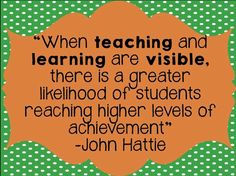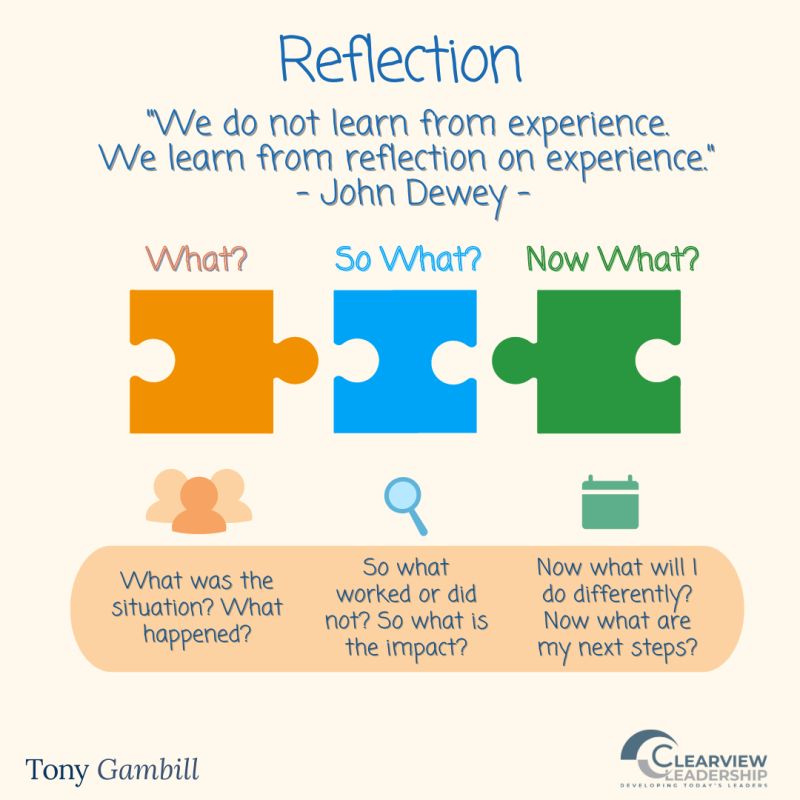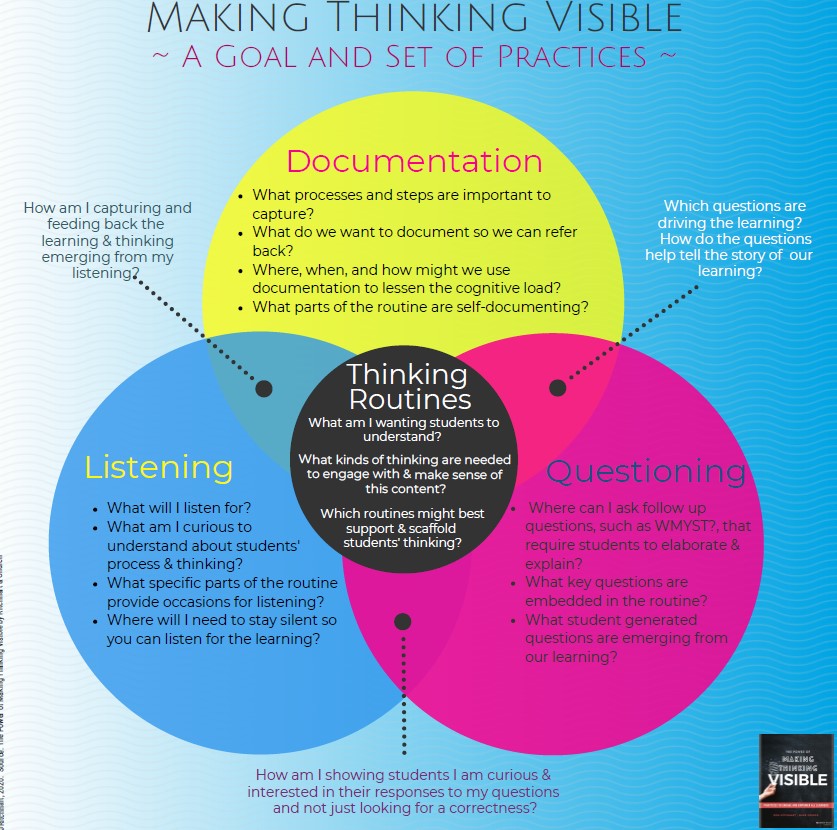
Summary
The concepts from The Power of Making Thinking Visible focus on fostering deep learning, engaging students actively, and developing critical thinking habits through questioning and routines.

How Making Thinking Visible Shaped My Approach to Teaching
The main points from The Power of Making Thinking Visible that have really shaped my thinking as an educator are fostering deep learning, keeping students engaged, and helping them develop their thinking skills.
I’ve learned that using questioning as a key tool can help students process what they’re learning and spark curiosity, which leads to a deeper understanding. Instead of just memorizing facts, this approach gets them actively involved in their own learning. I also love the idea of developing thinking habits through routines. Over time, students start to see how valuable this is for their learning, and it becomes part of who they are.
These concepts have really influenced how I’d want to create a classroom environment where students feel empowered to think critically and explore ideas, with both the teacher and students sharing the learning process.
I LOVE how this blog below stresses the point that unless you are willing to be truly interested in the way our students are thinking the MTV strategy won’t actually work.
Implementing the Making Thinking Visible Strategy

Since I’m not currently teaching in a classroom, I’d approach the “What? So What? Now What?” thinking routine as if I were using it with my colleagues in a meeting to review our career fairs. I’d start by getting everyone to focus on the basics (What?). First, we would break down what happened, things like how many employers signed up, how the logistics played out, what the students thought, and even how the food and cleanup went.
Then, I’d shift the conversation to why all of that matters (So What?). We’d reflect on what went well for example, we had great employer turnout. Then we would reflect on where things could’ve been better. Did the logistics flow smoothly? Could we communicate with employers more effectively? It’s all about figuring out the impact of each element and what we can learn from it.
Finally, I’d guide us toward the next steps (Now What?). This is where we’d brainstorm how to improve for next time. We may discuss topics like how to streamline registration, get students more engaged, or refine the event flow. I think this routine would really help us stay organized and ensure we walk away with clear goals to make the next career fair even better.
Using the “What? So What? Now What?” routine can really help us create a team atmosphere where everyone’s input shapes the success of our career fairs. This method encourages us to reflect on our experiences and have open discussions while empowering us to pinpoint actionable steps for improvement. In the end, it helps us enhance the experience for both students and employers, ensuring we keep evolving and meeting the needs of our community.
Check out Rob Ritchhart’s blog, where he explains how building effective thinking routines shows students that teachers value their responses, leading to deeper learning.

https://seesaw.com/blog/the-power-of-making-thinking-visible-with-ron-ritchhart
Here is another great article:
“The purpose of this blog post is to demonstrate the significance of critical thinking and the transformative influence of visible thinking routines in nurturing this vital skill.” (Host, 2024)
Connecting Making Thinking Visible to Key Threshold Concepts
The “What? So What? Now What?” strategy really supports a couple of TCE threshold concepts, especially curriculum co-construction and empowerment/agency.
- Curriculum is Co-Constructed: One key part of MTV is listening. When I use the “What?” section of this strategy, I’m focusing on what happened during our career fairs by gathering input from my colleagues. We talk about how many employers joined us, what logistics worked or didn’t, and how the students felt about the event. Listening to these insights helps us understand each other better and makes our thinking visible. For example, if we find out that students felt overwhelmed, we can work together to change our approach for future events. This co-construction of knowledge not only helps us improve our events but also creates a shared sense of ownership over what we teach.
- Teachers and Students Have Empowerment/Agency: The “So What?” part encourages us to reflect on why our experiences matter. By discussing what went well and what could be improved, we empower one another and realize that we have a say in shaping our learning environment. In our meetings, when we ask questions and invite everyone to share their thoughts, we’re making sure everyone’s voice is heard. This helps build trust and gives everyone a chance to contribute to our goals.
The “Now What?” section is all about figuring out our next steps. As we brainstorm ways to improve things like registration or student engagement, we take collective ownership of what needs to happen next. It reinforces the idea that we’re all responsible for creating a great experience for our community.
So, to sum it up, using the “What? So What? Now What?” strategy in the context of MTV really helps us co-construct our curriculum and empowers both teachers and students. It creates a collaborative atmosphere where everyone benefits!
-
Hello Keshia! I remember participating in Career Fairs and I would have loved the opportunity to debrief in such a collaborative and meaningful way. I think that there are so many strategies that can help undergraduate students understand how they were thinking and how that causes them to interact in the world. Great post!
-
Thank you so much! I’m glad you connected with my post. I completely agree! There are so many strategies that can help students reflect on their experiences and apply what they’ve learned to real-world interactions.
-
-
Thanks for your comment, Rebecca! I’ve also considered using the Be-Sure-To routine, as I feel it would work well while teaching soft skills. I agree with your point about students needing to see genuine interest from their teachers. It really does connect to the TCE threshold of Teachers and Students Having Empowerment/Agency. Without us being actively engaged, students might not feel empowered to participate fully.
-
Hi,
I really enjoyed reading about the strategy you implemented with adults. It’s fantastic to see how effective these approaches can be in engaging and motivating adult learners. The way you incorporated What? So What? Now What? is a great idea.
This strategy could be incredibly beneficial if applied to professional training days. Adults in professional settings often have a wealth of experience and knowledge. Creating opportunities for them to share and learn from each other can significantly enhance the training experience. By using interactive methods like What? So What? Now What?, we can move away from the traditional lecture-based format and create a more dynamic and engaging training atmosphere.
-
Thank you for your comment! I completely agree. I believe if the MTV strategy were used more widely in training, it would greatly benefit participants. Over the years, I’ve sat through many long training sessions where we’re bombarded with information and given little time to process it. If MTV routines were implemented, I think I would retain much more of what I learned.
-
-
Hi Keshia! I loved how you used the career fairs as your way of implementing MTV. The way you broke it down made it clear that collaboration and discussion would be prioritized, and I can see it working very well within a classroom setting as well! Have you considered using this strategy in your unit plan for the course, or are you interested in trying a different one? I also love the first blog you linked- I hadn’t considered previously how important it is that students can see genuine interest in their teachers, or they will never be motivated to share their thinking. I feel as if this ties in to the TCE threshold of Teachers and Students Have Empowerment/Agency. Students would not feel like they have empowerment and agency if we don’t make it so, and to do that, we must be just as engaged as they are!

Hello Keshia! I remember participating in Career Fairs and I would have loved the opportunity to debrief in such a collaborative and meaningful way. I think that there are so many strategies that can help undergraduate students understand how they were thinking and how that causes them to interact in the world. Great post!
Thank you so much! I’m glad you connected with my post. I completely agree! There are so many strategies that can help students reflect on their experiences and apply what they’ve learned to real-world interactions.
Thanks for your comment, Rebecca! I’ve also considered using the Be-Sure-To routine, as I feel it would work well while teaching soft skills. I agree with your point about students needing to see genuine interest from their teachers. It really does connect to the TCE threshold of Teachers and Students Having Empowerment/Agency. Without us being actively engaged, students might not feel empowered to participate fully.
Hi,
I really enjoyed reading about the strategy you implemented with adults. It’s fantastic to see how effective these approaches can be in engaging and motivating adult learners. The way you incorporated What? So What? Now What? is a great idea.
This strategy could be incredibly beneficial if applied to professional training days. Adults in professional settings often have a wealth of experience and knowledge. Creating opportunities for them to share and learn from each other can significantly enhance the training experience. By using interactive methods like What? So What? Now What?, we can move away from the traditional lecture-based format and create a more dynamic and engaging training atmosphere.
Thank you for your comment! I completely agree. I believe if the MTV strategy were used more widely in training, it would greatly benefit participants. Over the years, I’ve sat through many long training sessions where we’re bombarded with information and given little time to process it. If MTV routines were implemented, I think I would retain much more of what I learned.
Hi Keshia! I loved how you used the career fairs as your way of implementing MTV. The way you broke it down made it clear that collaboration and discussion would be prioritized, and I can see it working very well within a classroom setting as well! Have you considered using this strategy in your unit plan for the course, or are you interested in trying a different one? I also love the first blog you linked- I hadn’t considered previously how important it is that students can see genuine interest in their teachers, or they will never be motivated to share their thinking. I feel as if this ties in to the TCE threshold of Teachers and Students Have Empowerment/Agency. Students would not feel like they have empowerment and agency if we don’t make it so, and to do that, we must be just as engaged as they are!